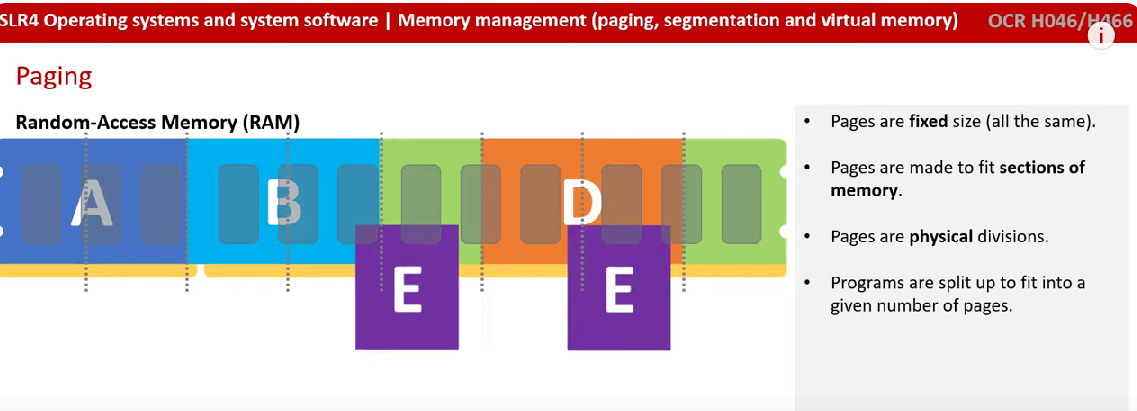Memory management
1/13
Earn XP
Description and Tags
Name | Mastery | Learn | Test | Matching | Spaced |
|---|
No study sessions yet.
14 Terms
Paging
a method of partitioning memory
memory is split into equal sizes called ‘pages’
pages are physical divisions
programs are then split to fit into given number of pages

Segmentation
a method of partitioning memory
based on logical divisions of the program, segments are logical divisions with different sizes
memory is partitioned according to this (check)
takes into account how the program is written
physical divisions
check
logical divisions
When a program is broken up (segmented) logically, loops, functions or modules are all together and not separated.
What is virtual memory?
A section of the hard drive that acts as RAM when main memory is full. Sections of programs not currently in use are temporarily moved to virtual memory through paging.
What is disk thrashing?
When the computer freezes as a result of pages being swapped between the hard disk and main memory too frequently. More time is spent transferring pages opposed to running the program. Becomes worse as virtual memory is filled up.
Benefits of virtual memory
facilitates effective multitasking
allows more extensive programs to be run
Drawbacks of virtual memory
disk thrashing
Slower access speeds than physical memory
Degrades performance if overused
Benefits of paging?
Facilitates efficient memory management
Enables the use of virtual memory
Drawbacks of paging?
can lead to internal fragmentation
Benefits of segmentation?
space-efficient due to only allocating space depending on the amount an application needs
Drawbacks of segmentation?
can lead to external fragmentation
What is internal fragmentation?
Wasted space within a page itself
Other unrelated data cannot be stored in this space, more wasted space exists in main memory over time. This is internal fragmentation
What is external fragmentation?